Since planting trees is fashionable now, and will be even more in the upcoming years, it is advisable to get to know the native species. In essence, these are the species that grow in an area, without the intentional or accidental aid of humans. This might seem very simple but the situation becomes more complicated if the vegetation of the area has been destroyed for a long time and what used to grow there cannot be easily deduced. In those cases, when the remains of the natural vegetation are very scarce or completely gone, we must turn to specialists in botany, biogeography, geobotany, etc., from the nearest university. Resorting to the elderly local people could also be helpful but there is a risk that, regardless of their best intentions, they could provide erroneous information. We must always have a historical vision, going back thousands of years, and that combines historical knowledge and good biogeographical knowledge. When our grandparents were born, there already were numerous exotic and invasive species in the countryside (eucalyptus, agaves, prickly pears, etc.), and for this reason they may sometimes tell us that they are species of the land, that they have always been here.
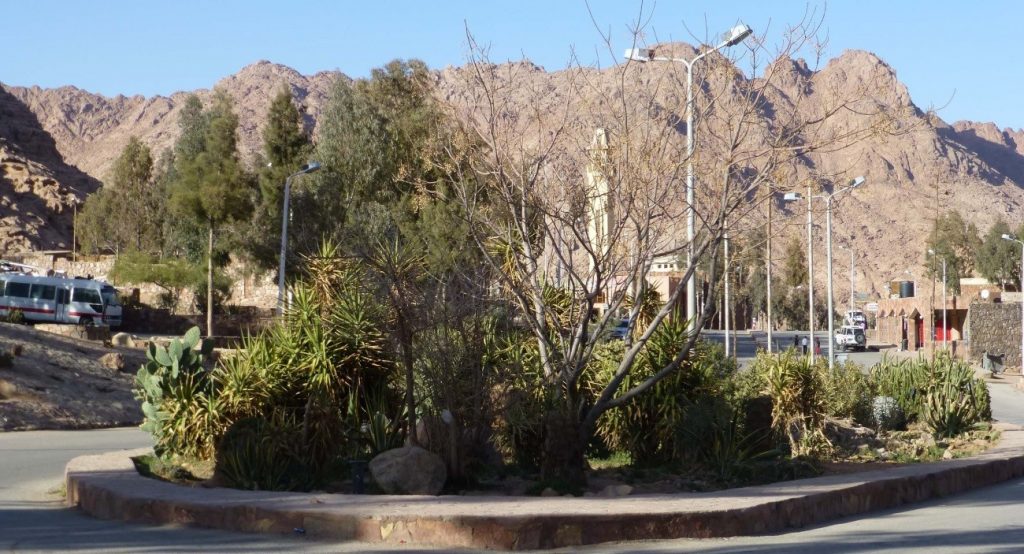
A large group of species of exotic plants (some of them invasive), planted in parks, streets and roundabouts of a small town in the Sinai Peninsula, one of biologically richest areas in the Mediterranean. Is time to substitute all these by trees and shrubs natives to the area, some of them really beautiful and threatened with extinction. On top of stopping the expansion of exotic species, this would give public spaces an added value of beauty and interest that would be appreciated by both the local population and by visitors from elsewhere. Unfortunately, scenes like this one can be seen throughout all the Mediterranean countries. Helios Sainz.
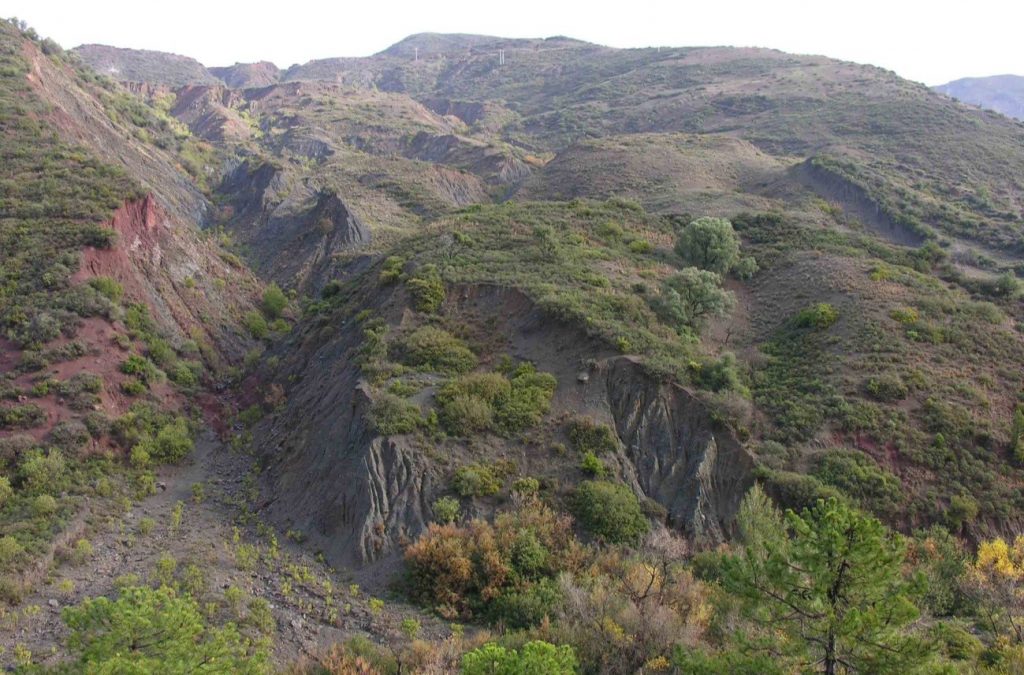
Excessive harvesting of firewood, together with excessive grazing of livestock, is causing intense erosion in fertile lands such as these in Xaüen (N of Morocco). The only way to prevent further damage to the soils and the biodiversity is by regulating these practices and implementing immediate reforestation with native species. Jesús Charco.
Being native in Morocco does not mean that a species will be native to all areas of Morocco. When this is not understood correctly, it results in administrations, companies, NGOs and garden centres frequently offering plants as natives, even when they know that they will be planted in areas to which they are not native. North Africa is biogeographically complex, but this is not a problem, because thanks to this complexity and the diversity of soils, climates and microclimates, it possesses an extraordinary biodiversity. It must be studied and respected, and it must not be distorted by planting whichever species in whichever place.
Preserving the genome of plants is of utmost importance for the future. For this reason, it is extremely important to know the origin of the seeds. In a region with such great genetic diversity as in North Africa, seeds of forest species should only be planted in the area where they originated. If someone wishes to plant in a piece of land, and there are no available seeds or saplings from that area in the market, the best option would be to directly collect seeds from the native trees and shrubs of the area in which the planting will take place.
Holes (either manually or mechanically made) are always preferable to straight furrows made by tractors that eliminate a good part of the native vegetation (when there is still any), harm the structure of the soils and render the landscape artificial.
Planting young trees of 1-2 years of age in between spiny shrubs seems like a good idea to protect the new plant from droughts and herbivores, but soon they will start competing with the accompanying species and one will end up dominating the other. A better option is planting where there are no other woody species, so that roots can fully develop, without having to compete for nutrients. Over the years, the roots of all of them will end up communicating, establishing relationships, now yes, beneficial for many of them and for the formation and maintenance of the soil. To protect them from sunstroke and herbivores (when necessary), the best practice is to cover them with a protective tube, opaque (not a mesh), handmade or store-bought (they are very cheap when bought in bulk). The tubes must be approximately 10-15 cm in diameter and 70-80 cm in length, so that about 10 cm remain buried and about 50-60 cm stand above the soil. These tubes protect the plant, as mentioned above, and have two great additional advantages. On one hand, when the plant is watered, the tube retains most of the water for the plant. On the other hand, the tube lets the plant grow more rapidly in height, since the opaque quality of the tube makes the plant grow mainly upwards, in search of sunlight.
Finally, once the young trees have been planted in holes scattered through the land, with the protective tubes in place, it is advisable to water them as a way of helping them at the beginning of the dry season (to help them survive it), and to water them again at the end of this season (in case rainfall is delayed), at least for the first two years, until the plant is well rooted in the soil.
After 1-3 years, the crown of sapling will have grown above the tube; for this reason, to stop herbivores (either wild or farm/domesticated animals) from eating the plant, and so that the rapid growth in height can continue, the tube must be substituted for a larger one (approximately 30 x 130 cm), with approximately 20 cm buried underground. This substitution of the tube ensures that the plant continues to be protected and its growth will be fast and safe. At 4-6 years, when the crown protrudes from the second tube, the tube can be removed, because the plant is already well rooted and the plant’s trunk, already hardened, will protect it from small herbivores. Larger herbivores should still be kept away for a few more years, until they cannot reach the mid and top parts of the plant’s crown.
There are, of course, other processes for sowing/planting, but the one we have described entirely respects the natural environment and offers a good cost-benefit ratio for the future forest. It could be implemented by the nation’s government, with large budgets, trucks and other means, or it could be implemented, with fewer resources but with great enthusiasm, by local communities, school children, organizations of any kind, etc.
Nevertheless, planting trees to improve the environment (although undoubtedly a great initiative) is not the most important goal; what is really important is to preserve and allow the natural vegetation to develop freely. On many occasions, the best way to recover a forest is to stop interfering with the terrain, of course with the exception of the removal of exotic species. The forest, undisturbed by human manipulation, and especially free of grazing livestock, generally recovers well, although it is a slow process. In the Mediterranean areas a rapid and effective recovery of the forests could be guaranteed by simply putting in place exclusion fencing that prevents livestock from entering and if there are native seed trees in or near the area. This solution is not so fast or so flashy but it is a very positive and simple strategy also for the Saharan and Sahelian areas.
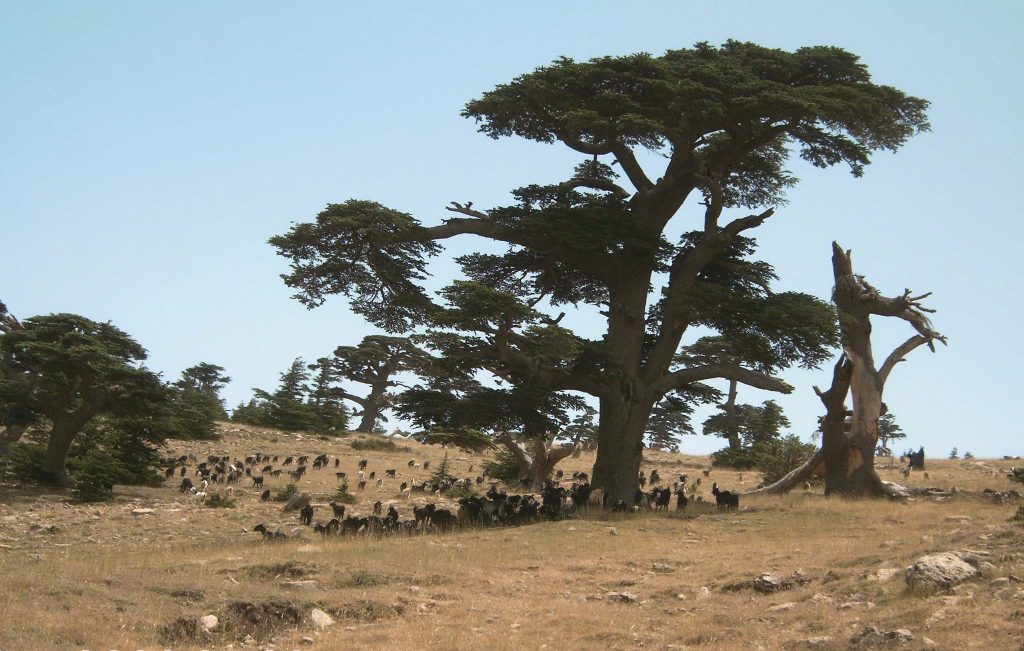
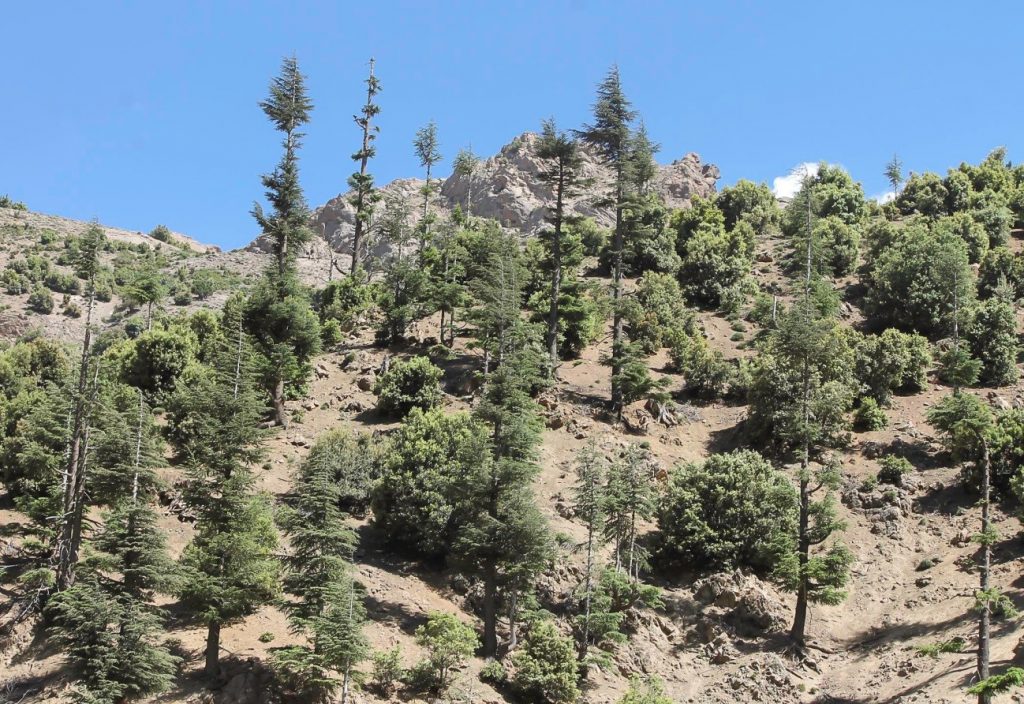
A large part of the Mediterranean forests of North Africa are disappearing. The reason is neither felling nor forest fires, but the forests’ age, the mortality caused by erosion and desertification of the soils, and the mutilation that shortens the trees’ lifespan. All these causes are mainly a consequence of shepherds and the overgrazing of livestock. The photographs show cedar forests slowly disappearing. Above: Algeria (Khellaf Rebbas.). Bellow: Morocco (Abdelmonaim H. Bakali).
In addition to the increasing invasion of alien species, overgrazing, in any of its forms, is the main threat to the conservation of most terrestrial ecosystems in North Africa.
When North African experts are asked about native plant problems, almost all mention overgrazing first. And the one who doesn’t say it in the first instance, after reconsidering a bit, he admits that yes, it is the main problem. It has been recognized for more than a century, but statistics show how herds of cattle, and consequently the desert, continue to grow continuously in North African countries.
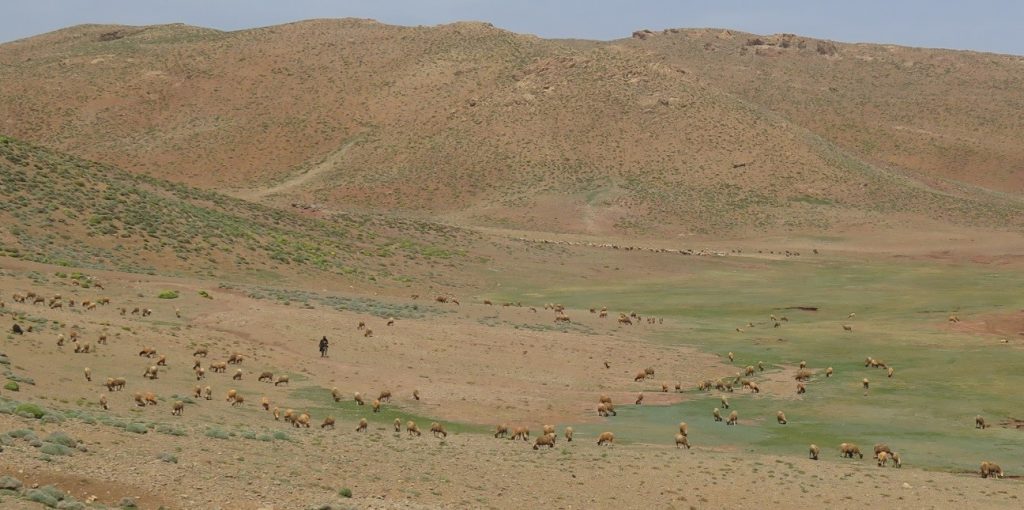
José Antonio Bañuelos
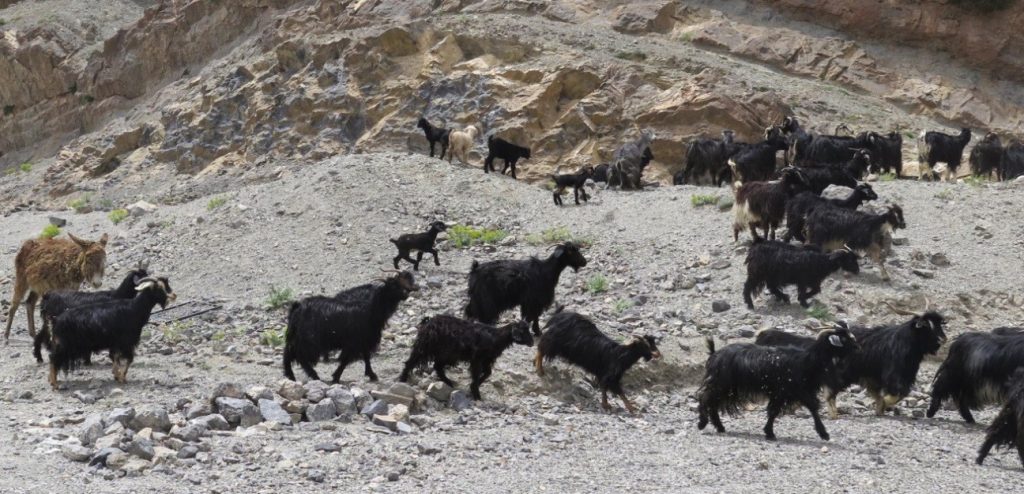
José Antonio Bañuelos
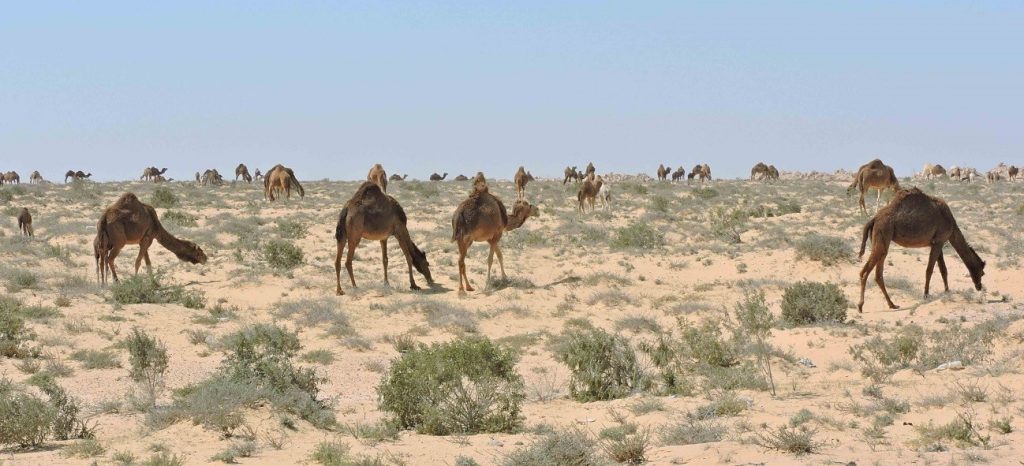
Jesús Charco
Although sometimes the number of heads of cattle does not seem excessive, the presence of any amount of livestock can be too much in most of the terrain, considering the increasing poor quality of the soils, the drought and the progressive elimination of natural vegetation. The great majority of non-urban, non-cultivated soils in flat areas are in urgent need of protection from livestock and desertification. It has been said thousands of times, in local, national and international forums. Very large areas –hundreds of thousands of hectares, especially next to watercourses, hillsides and mountainsides– should be protected from grazing for at least 30 years. At a later stage, when the lower part of tree crowns has largely surpassed 2 m in height, these areas could be reopened to properly regulated and sustainable grazing. Cattle would then find excellent pastures where 30-40 years ago there were only rocks, dirt and dust.
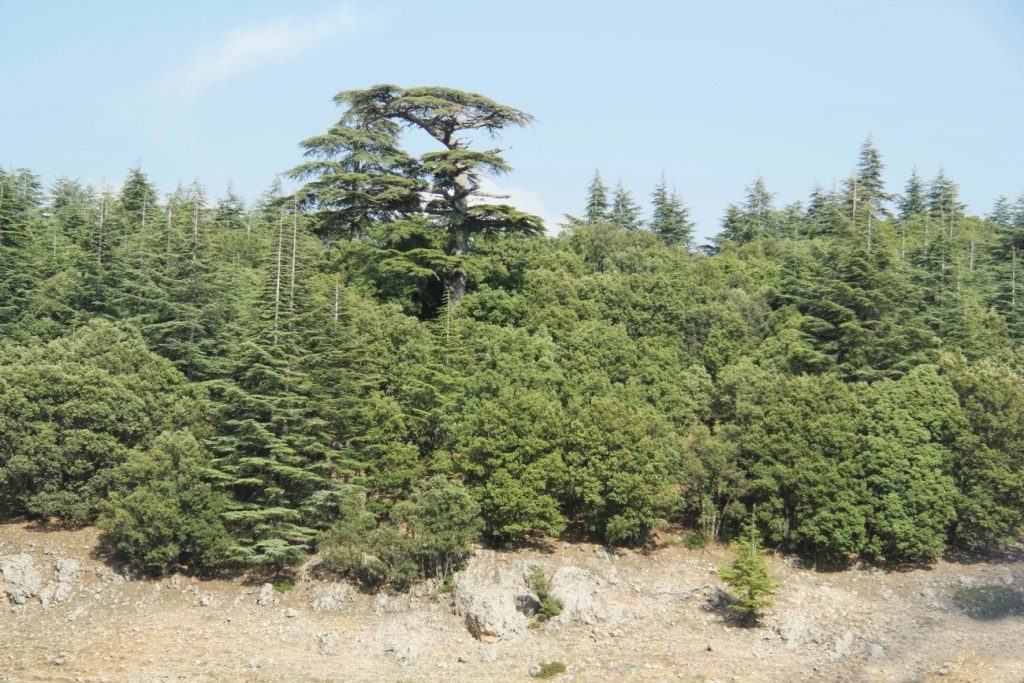
When grazing is prohibited, the regeneration of the woodlands can be astonishing in large areas of the Mediterranean region and the Sahel. For this reason, although planting native trees is important, it is even more important to facilitate the natural regeneration of the forests. This photograph shows a mixed forest of cedars and holm oaks that is recovering after the banning of grazing, in Morocco. Joaquín Molero.
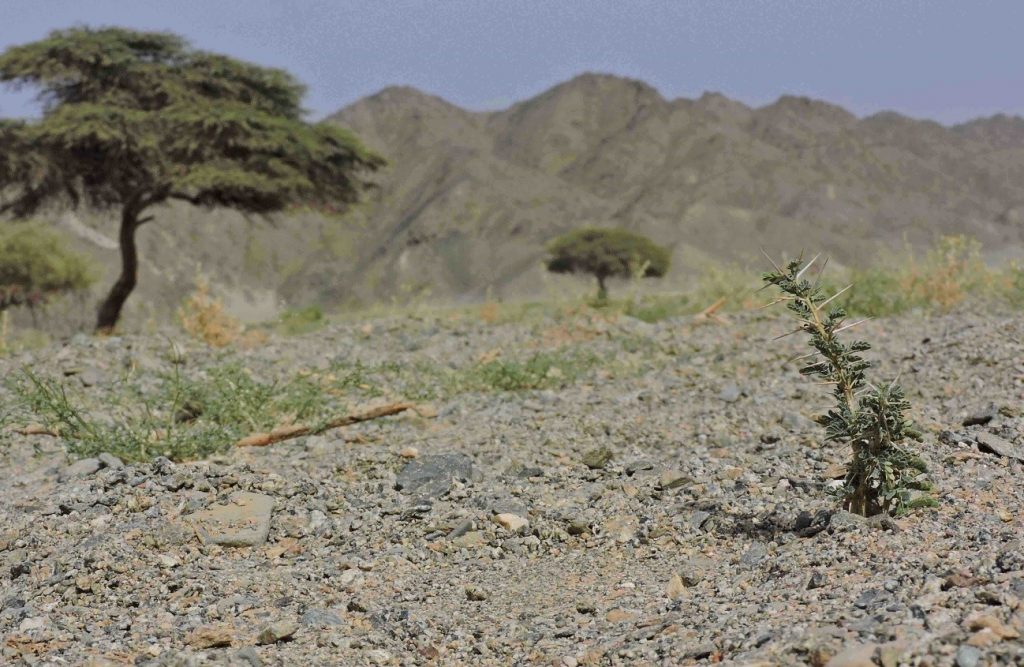
The natural regeneration of trees can occur even in areas considered arid or desert, if there is seed dispersal. This Vachellia tortilis seedling, in SE Egypt, about 10 cm, grows to become a large tree, a refuge for fauna, creator and protector of soils and humidity. However, if no measures are taken to protect it, nor will its spines save it from overgrazing by goats and camels, it will not be able to grow and will most likely disappear before reaching 1m in height. Jesús Charco.
In order to conserve and recover biodiversity in North Africa and in the rest of the world, especially plant biodiversity (the basis of ecosystems), society must understand that protecting what remains of forests, bushes and savannahs, eradicating overgrazing and exotic species, is more important than planting trees.
Therefore, to stop the loss of biodiversity and the growth of erosion and desertification in North Africa, the combination of the following three practices would be ideal:
- Drastically reduce the pressure of livestock on the natural environment. Definitely or at least delimiting numerous extensive and scattered areas, until the forest or savannah recovers (around 30-40 years) and then reopen again to sustainable livestock.
- Develop massive mixed plantations of native trees, well planned, recreating as much as possible the old forest, not aligned, with opaque protective tubes and with support irrigation at least in the dry seasons of the first 2 years. Or with other environmentally friendly techniques of equal or greater effectiveness.
- Eradication of exotic and invasive species from the natural environment, which do so much damage and will do even more (if measures are not taken) to the economy and to the extraordinary African biodiversity.
To create parks, avenues, gardens, central reservations, roundabouts, etc. with native species, plants can be selected from a wider range of local and regional species. Thus, using our imagination, areas of great beauty can be created, with a multitude of shapes, perfumes and colours. As an added value, they would serve as botanical gardens to the environmental education.
If what is intended is intensive and profitable logging, with native or alien species, preventing the latter from spreading spontaneously, it would be acceptable, since we all use paper and wood; but these would not be forests, but crops for timber. However, considering that the exploitation of timber from natural forests of North Africa is only slightly or not at all profitable in most of the territory, the best option here is to destine the forest to other uses, because with their recovery, society as a whole would benefit from sustainable and unaggressive forest productions, such as the extraction of cork, and other non-woody or non-timber fruits, such as beekeeping, tourism, the retention of soil and moisture (which is the most important economically), the capture of CO2, etc.

